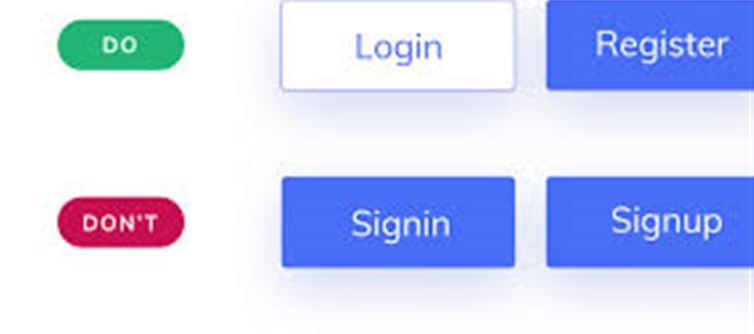
In the wallet PLATFORM' target='_blank' title='digital-Latest Updates, Photos, Videos are a click away, CLICK NOW'>digital world, terms like Login, Sign In, and Sign Up are used frequently, and many of us often use them interchangeably. But did you know that there’s a subtle difference between these terms? Understanding these distinctions can help you navigate websites, apps, and online services more easily.
Let’s break down the key differences between Login, Sign In, and Sign Up:
1. Sign Up: The First Step to Access
Sign Up refers to the process of creating a new account on a website, app, or platform. When you “sign up,” you provide your personal details (such as your name, email, and password) to register with the service. This is your initial registration step to get access to the platform.
Key Features:
· Involves creating an account.
· You provide personal information (name, email, password, etc.).
· After signing up, you receive a confirmation email or a link to verify your account.
Example:
· When you create a new account on Netflix, Facebook, or Amazon, you are signing up.
2. Sign In: Gaining Access to Your Existing Account
Sign In is used when you want to access an existing account you have already signed up for. It involves entering your username or email address and your password to access your account.
Key Features:
· Happens after you have already signed up.
· Requires authentication through your email/username and password.
· You return to your account after leaving or logging out.
Example:
· If you’ve created an account on Google or Twitter, when you want to return to your account, you will sign in using your credentials.
3. Login: Another Term for Signing In
The term Login is often used interchangeably with Sign In, but essentially, they mean the same thing. Login refers to the process of gaining access to your account by entering your username/email and password.
Key Features:
· Just another way to say sign in.
· Both terms involve the process of entering credentials to access a previously created account.
· You might see “Login” on certain websites or apps instead of “Sign In.”
Example:
· Websites like Amazon, LinkedIn, and Instagram use the term Login to ask users to enter their credentials.
The Key Difference:
· Sign Up: The process of creating a new account for the first time.
· Sign In and Login: Terms that refer to the process of entering credentials to access an already created account.
Quick Tip:
· If you’re new to a platform or service, you will need to Sign Up.
· If you already have an account, you can Sign In or Login (they are often used interchangeably).
Why This Difference Matters:
Understanding these terms can make your online experience smoother, especially when troubleshooting account-related issues. Confusing Sign In with Sign Up could cause frustration, as Sign In would prompt you to enter credentials for an account that doesn’t exist yet if you haven’t signed up. Conversely, using Sign Up when you want to log into an account you’ve already created will take you in circles.
Disclaimer:
The views and opinions expressed in this article are those of the author and do not necessarily reflect the official policy or position of any agency, organization, employer, or company. All information provided is for general informational purposes only. While every effort has been made to ensure accuracy, we make no representations or warranties of any kind, express or implied, about the completeness, reliability, or suitability of the information contained herein. Readers are advised to verify facts and seek professional advice where necessary. Any reliance placed on such information is strictly at the reader’s own risk..jpg)




 click and follow Indiaherald WhatsApp channel
click and follow Indiaherald WhatsApp channel